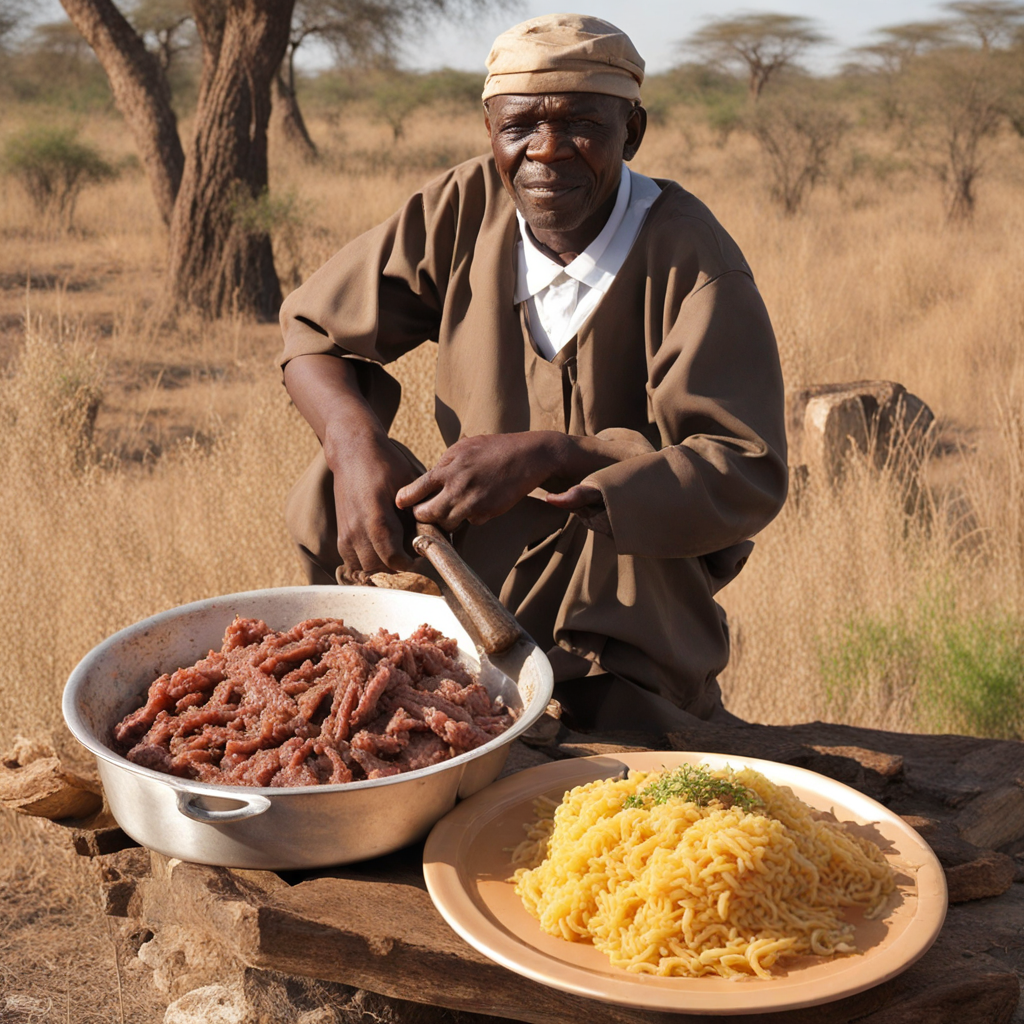Wild Spinach
Wild Spinach, known locally as 'morogo,' is a cherished leafy green that thrives in the diverse landscapes of Botswana. This nutrient-rich plant is typically harvested from the wild, making it a symbol of the region's connection to nature and traditional foraging practices. The leaves are tender and vibrant, often exhibiting a rich green hue that hints at their fresh, earthy flavor. When prepared, wild spinach offers a unique taste profile that balances bitterness with a subtle sweetness, making it a versatile ingredient in various dishes. In Botswana, wild spinach is commonly cooked in simple yet flavorful ways, often sautéed with onions and tomatoes, or added to traditional stews. The cooking process enhances its natural flavors, allowing the earthy notes to shine while softening the leaves' texture. Many locals enjoy pairing morogo with staple foods like pap (a maize porridge) or serving it alongside grilled meats, creating a beautiful harmony of flavors and textures on the plate. This dish embodies the essence of Botswana's culinary heritage, showcasing the importance of local ingredients and traditional methods. Beyond its delightful taste, wild spinach is also packed with nutritional benefits, serving as a significant source of vitamins and minerals. Its rich iron content and other essential nutrients make it a valuable addition to a balanced diet. For food enthusiasts seeking to explore new tastes, incorporating morogo into meals offers a delicious way to experience the flavors of Botswana, all while embracing the sense of community and sustainability that comes with foraging for this wild green.
How It Became This Dish
The History of Marog: A Cultural Staple of Botswana Marog, commonly known as wild spinach or African spinach, is a cherished leafy green that holds a significant place in the culinary and cultural landscape of Botswana. Its origins, nutritional benefits, and role in traditional and contemporary cuisine reflect the resilience and adaptability of the people who cultivate and consume it. #### Origins and Botanical Background Marog primarily refers to the leaves of various plant species, most notably *Amaranthus* (known as amaranth) and *Portulaca oleracea* (purslane). These plants are indigenous to Southern Africa and have been utilized for centuries, not only for their nutritional value but also for their medicinal properties. Archaeological evidence suggests that the consumption of wild greens, including marog, dates back thousands of years, with the San people of the Kalahari Desert being among the earliest foragers of these plants. The rich biodiversity of Botswana's environment has allowed marog to thrive in various regions, particularly in the wild, where it grows abundantly in fields and along riverbanks. Traditionally, women and children would gather these greens, a practice that not only supplied food but also fostered community bonding and cultural transmission. This act of foraging underscores the deep-rooted connection that the people of Botswana have with their land and its resources. #### Cultural Significance Marog is more than just a food item; it embodies a cultural identity and a way of life for many Batswana. The preparation and consumption of marog are often intertwined with communal practices, festivals, and rituals. In many households, marog is a staple during celebrations, symbolizing prosperity and the connection to the earth. Its vibrant green color and nutritious profile make it a symbolic representation of life and sustenance. In traditional settings, marog is prepared in various ways, often cooked with ingredients like maize, groundnuts, or meat, reflecting the agricultural practices and available resources of the region. The dish is not only nourishing but also promotes social cohesion as families and communities gather to share meals, stories, and traditions. Furthermore, marog has been a subject of folklore and oral traditions. It is often featured in proverbs and sayings that emphasize the importance of nature, community, and resilience. For example, the phrase "Marog a a monate" (Marog is sweet) is often used to express appreciation for the simple, yet profound pleasures of life, reinforcing its significance in everyday existence. #### Nutritional Value and Development Over Time Nutritionally, marog is a powerhouse. Rich in vitamins A, C, and K, as well as essential minerals like iron and calcium, it is an important food source, particularly in rural areas where access to varied diets may be limited. The leaves can be consumed raw, cooked, or dried, enhancing their versatility in the kitchen. In recent years, there has been a growing recognition of the nutritional benefits of marog, leading to renewed interest in its cultivation and consumption amid global movements toward healthier diets and sustainable agriculture. As Botswana transitioned from traditional subsistence farming to a more modern agricultural system, the cultivation of marog adapted to these changes. While it remains a wild green, home gardens and small-scale farming initiatives have emerged, allowing communities to grow marog alongside staple crops such as maize and sorghum. This shift has not only improved food security but has also opened avenues for economic development through the sale of marog in local markets. The rise of urbanization has also influenced the consumption patterns of marog. While it remains a staple in rural areas, urban populations have begun to incorporate marog into their diets, recognizing its health benefits and unique flavors. Restaurants and food outlets in cities like Gaborone are increasingly featuring marog on their menus, presenting it in innovative dishes that blend traditional flavors with contemporary culinary techniques. #### Modern Day Challenges and Resilience Despite its cultural importance and nutritional benefits, marog faces challenges in the modern era. The pressures of globalization, climate change, and urbanization pose threats to traditional foraging practices and the availability of wild greens. As land is increasingly converted for agriculture and urban development, the natural habitats where marog grows may diminish, potentially impacting the communities that rely on it. However, initiatives aimed at conserving traditional food sources and promoting biodiversity are emerging. Agricultural programs in Botswana are encouraging the cultivation of indigenous plants like marog, and educational campaigns are raising awareness about the importance of these greens in diets. Local organizations are working to reconnect younger generations with traditional food practices, ensuring that the knowledge and appreciation of marog are passed down through families. Additionally, the global interest in plant-based diets and superfoods has positioned marog as a potential player in health-conscious markets. Entrepreneurs are exploring value-added products, such as marog powder and ready-to-eat meals, catering to both local and international consumers. This development presents an opportunity to celebrate and sustain the cultural heritage of marog while also adapting to contemporary dietary trends. #### Conclusion The history of marog in Botswana is a rich tapestry woven from tradition, culture, and resilience. From its origins as a wild green foraged by early communities to its modern-day status as a symbol of health and sustainability, marog continues to play an essential role in the lives of many Batswana. Its journey reflects not only the adaptability of a food source but also the enduring connection between people and their environment. As Botswana navigates the challenges of the modern world, the story of marog serves as a reminder of the importance of preserving culinary traditions, embracing biodiversity, and fostering community connections through food. Whether enjoyed in a simple home-cooked meal or a contemporary restaurant dish, marog remains a testament to the richness of Botswana’s culinary heritage and the vibrant culture that continues to celebrate it.
You may like
Discover local flavors from Botswana






